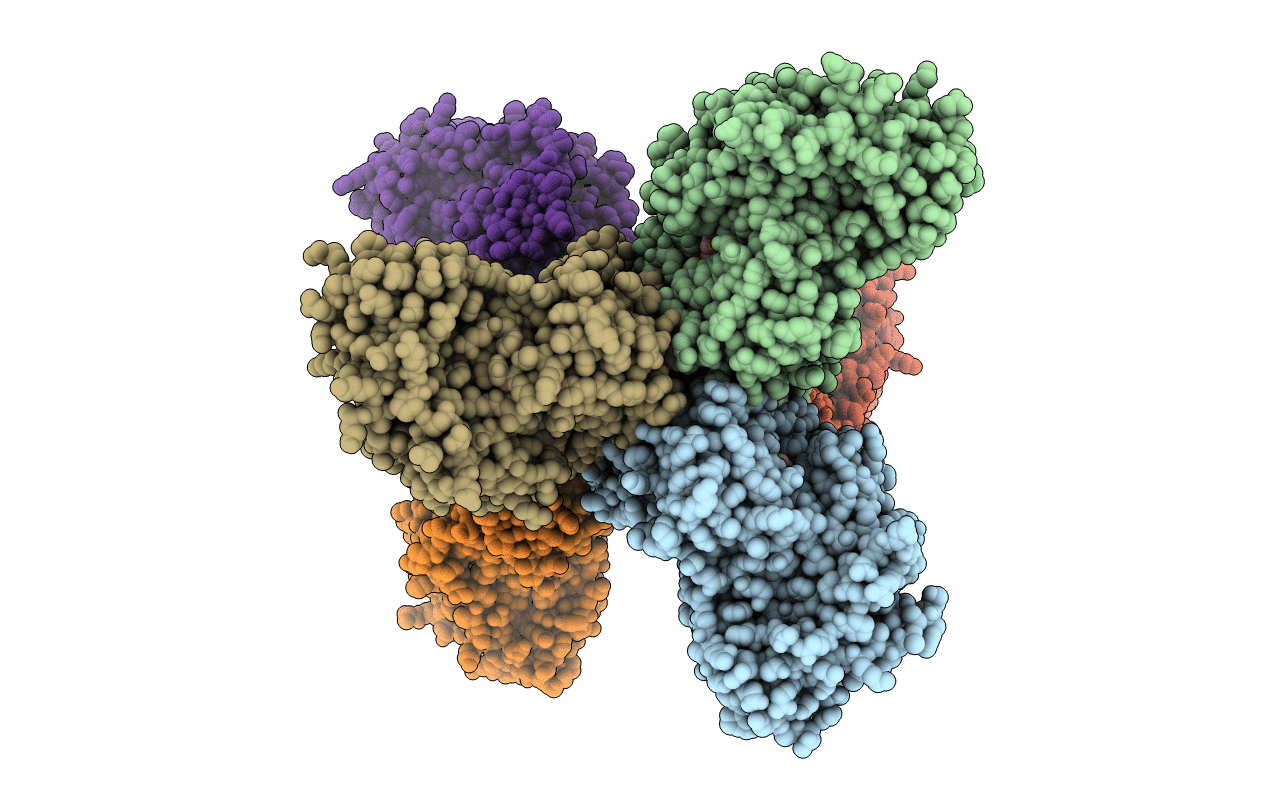
Deposition Date
2018-04-13
Release Date
2019-02-20
Last Version Date
2024-10-23
Entry Detail
PDB ID:
6D25
Keywords:
Title:
Crystal structure of the GH51 arabinofuranosidase from Xanthomonas axonopodis pv. citri
Biological Source:
Source Organism:
Xanthomonas axonopodis pv. citri (strain 306) (Taxon ID: 190486)
Host Organism:
Method Details:
Experimental Method:
Resolution:
1.91 Å
R-Value Free:
0.16
R-Value Work:
0.14
R-Value Observed:
0.14
Space Group:
P 1 21 1


